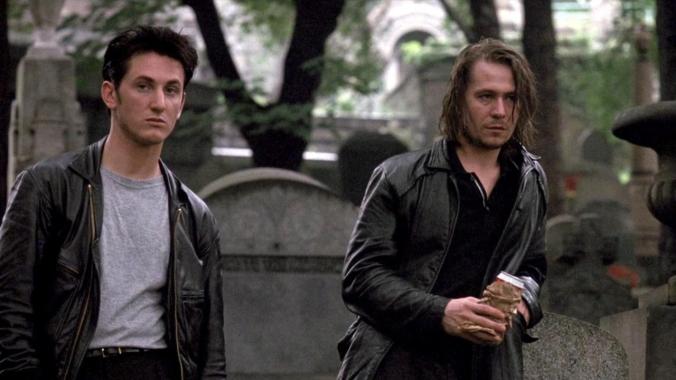Gee, for someone who’s spent the past few years lecturing others on the hazards of living on Memory Lane—by way of curated collections of memorabilia, or the unconscionable expropriation of superheroes from children, or whatever your nostalgic opiate—I quite recently became starkly aware of my own crippling sentimental yearning for obsolete pleasures. But I’ve also identified the precise agent of disorientation that’s led many of us down this dead-end path… and, with it, a way out. First, some backstory.
I’ve had occasion this autumn to enjoy ample time back on the East Coast, both a season and region I can never get enough of. I spent a weekend in Rehoboth Beach, Delaware, with a group of high-school friends, many of whom I hadn’t seen in a quarter century. I visited my beautiful sister in Washington, D.C., where we took in a Nats game so I could get a firsthand look at the team my Dodgers were set to trounce in the playoffs. I attended my closest cousin’s wedding (Bo to my Luke), and served as best man at my oldest friend’s—both in New Jersey. I marched in Greta Thunberg’s #ClimateStrike rally at Battery Park, and took meetings with representatives from the Bronx and Manhattan borough presidents’ offices about bringing both districts into the County Climate Coalition.
(I also got chased out of Penn Station by a mutant rat, so it was about as complete a New York adventure as I could’ve hoped for.)
Wonderful and often productive as those experiences were, though—the subway run-in with Splinter from Teenage Mutant Ninja Turtles notwithstanding—my favorite moments were the ones where nothing so noteworthy occurred. The pints at my favorite pubs. The old faces I stopped to chat with “on the Avenue,” as we say back home. The solitary strolls through the park amidst the holy silence of snowfall.

More than any of that, though—the ballgames, the gatherings formal and informal, the walks down the street or into the woods—I did what I always do, regardless of site or circumstance: entertained quixotic fantasies about moving back.
This has become, over the past half-decade, a personal pathological affliction, as my long-suffering friends and family can lamentably attest. I mean, I left New York for Los Angeles eighteen years ago. Eighteen years! That’s years—not months. Christ, Carlin, at what point does the former cease to feel like home in favor of the latter?
I can’t say what prompted my recent epiphany, but for the first time in all my exhausting exhaustive ruminating on the matter, this simple, self-evident truth occurred to me: I’ve never really left New York.









Recent Comments